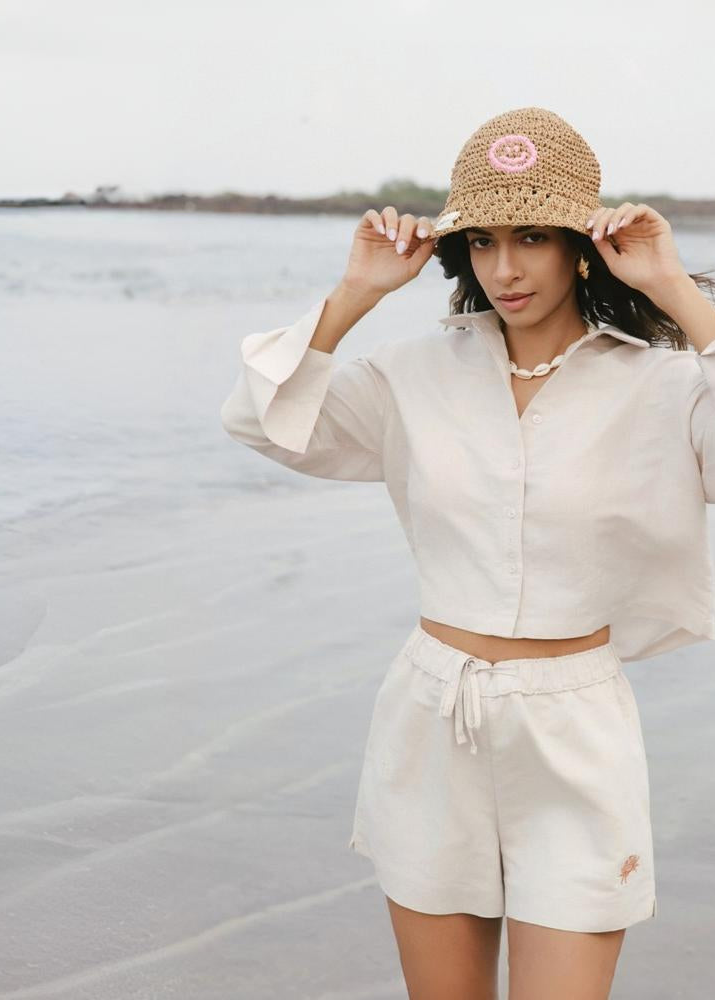Author: Saloni Dahanukar
It comes as no surprise that hemp is slowly turning into the sustainable world’s favourite godchild. With minimal upkeep costs and a comparatively less labour intensive production cycle, the demand for the crop is rising globally.

But before we take a deep dive into our hemp fact sheet, it’s probably a good idea to disclaim that hemp is not marijuana, and growing it is definitely not illegal. Although they belong to the same family tree, the two have very different THC levels, and so, hemp seeds do not have the ability to intoxicate you.
So how exactly is hemp made?
The process of cultivating hemp for seeds is different from cultivating it for fibre. For fibres, farmers harvest the plant during the early to the mid-flowering stage. They use a special machine to harvest most plants because the seeds have to be sown very deep into the soil for optimal growth.
After the crop is harvested, it is cut and then placed on the ground for weeks so that it decomposes and the fibres can bind themselves together. This is a decay method known as retting. The decayed stems are then dried and treated so that they can be processed into yarn. To make the fibres softer and boost elasticity, some producers even spin the fibre before processing. After the spinning stage, it is woven into fabric and textile garments are made either using hands or machines.
Is hemp really sustainable?
Hemp is not only a biodegradable crop, but also yields almost 200% more fibre than regular cotton. With low carbon emissions and comparatively lesser water usage, it's one of the most sustainable fibres that could exist. Moreover, one of the biggest wins for hemp is that it doesn’t require pesticides, herbicides, or insecticides to grow. These chemicals are toxic to the environment, including the people and animals around the farmland. Furthermore, hemp has a deep root system, which allows for constant soil improvement. It is one of the only plants, where the entirety of the crop is useful. While the stalk is used for fibre, the hurds and leaves can be ploughed into the soil to serve as fertiliser. This replenishes soil fertility and aids the growth of upcoming hemp fabric crops. Additionally, during the production stage, we can also see more of the crop’s eco-friendly nature. Since the whole plant is useful, it produces no industrial waste by-products. Manufacturers convert the stalks to textile fibres and woody parts to produce an array of different products like animal bedding and cattle warmers.
A few hemp comparisons:
Hemp vs. Cotton: When comparing the sustainability of the fabrics, hemp is significantly more sustainable. The method of growing hemp requires less water, and no synthetic fertilisers or pesticides. Cotton, on the other hand, requires more of these ingredients for both growth and production. Cotton is definitely the more softer fabric, but in terms of durability, hemp is more long lasting and robust.
Hemp vs. Bamboo: While Bamboo is also a widely celebrated fibre for its sustainability, when compared to hemp it stands second with regards to durability. Hemp is a far more reliable fabric with a higher endurance rate. However, bamboo is silkier and contains certain hypo allergenic components that hemp does not.
Hemp vs. Linen: While both fabrics fare equally in terms of breathability and weight, hemp’s longer fibres make it stronger and more sustainable. It also requires much less land compared to linen and yields a much higher amount of woven cloth from its flowers.
In conclusion, hemp fibres are capable of creating durable, long lasting and most importantly sustainable garments that get softer with each wash. A farmer’s favourite, but also slowly becoming the consumer’s go to choice, hemp is on its way to revolutionise the garment industry and we’re here for it!



















Leave a comment
This site is protected by hCaptcha and the hCaptcha Privacy Policy and Terms of Service apply.